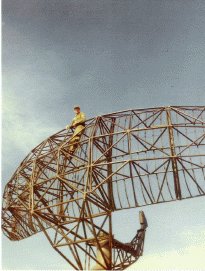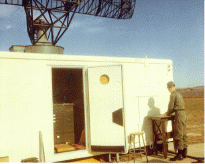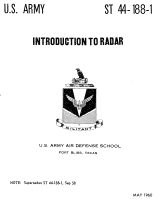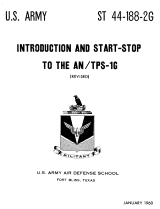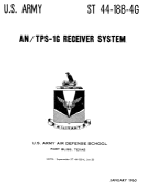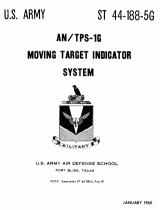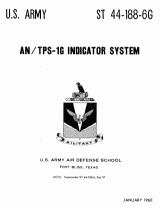| Attached is a photo of Chuck
Zellers on the AN/FPS-75 radar antenna circa 1965. Click photos for larger
views!
We have Chuck to thank for these radar manuals on the page below! Chuck used these manuals during his maintenance training in 1963 at Ft. Bliss, TX. He was then stationed on a Nike Ajax site at Swedesboro, NJ and a Nike Hercules site at Crete, NE. |
|
|
|
|
|
click photo for larger view! This photo shows the IFC (Integrated Fire Control Area) from some distance. The item on the left is the Nike Acquisition radar, the white "ball" in the center is a tracking radar and the radar on the right is the AN/FPS-75 ABAR (Alternate Battery Acquisition Radar). |
|
|
This shows the AN/FPS-75 radar van where the
transmitter, receiver, display and IFF where housed. Receiver video was
sent to the "BC" (Battery Control) van. The video displayed
targets that were selected (acquired) for engagement.
click photo for larger view! |
|
|
|
|
|
Remembering Nike -By Chuck Zellers 2005
The Cuban Missile Crisis in 1962 brought a new
challenge to us. The Philadelphia defense consisted of 12 or so Nike
sites. Each would take turns in rotation, assuming various states of
ready. From full red status, to other less levels of alert. When the Cuban
issue started, all missile batteries went on full alert, I think it was
called Defcon 3, not sure about that anymore. Missiles were raised
on their launchers, ready to go. This lasted for 10 days or so, being on
alert around the clock, working 12 HR shifts. During this time several
airplanes off the New Jersey coast were challenged for identification
using IFF or other methods. Nothing came of it but it was a very
interesting time! Around that time actress, dancer Juliet Prowse came to
visit us. We all gathered in the mess hall, were handed a small pack of
cigarettes and could visit with her. Don't remember why she was there but
suppose it was because of the Cuban thing. |
|
